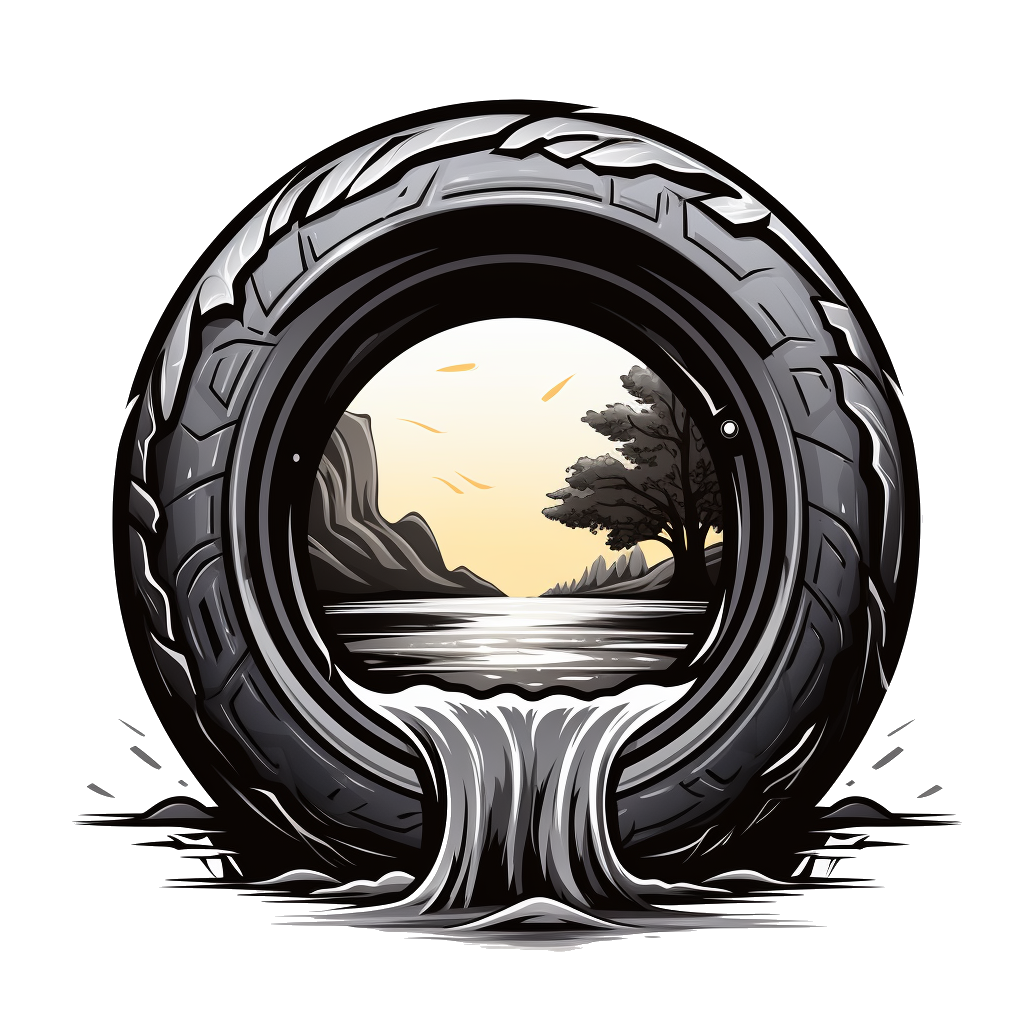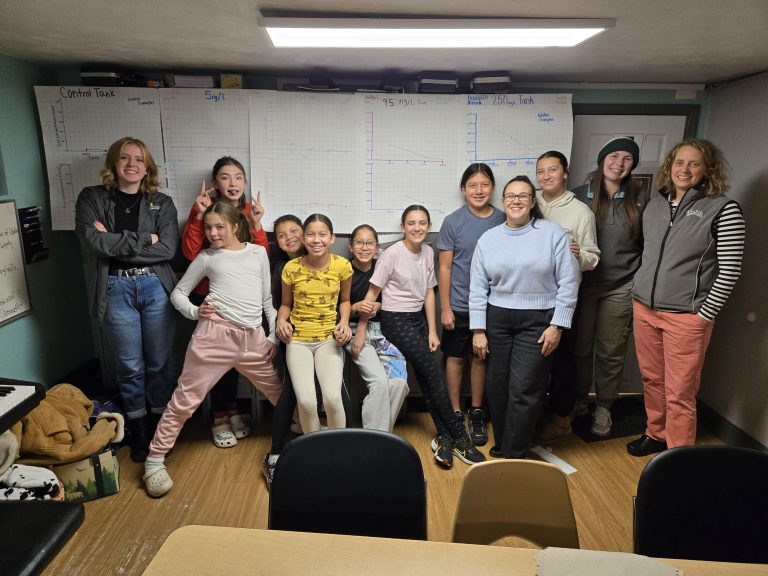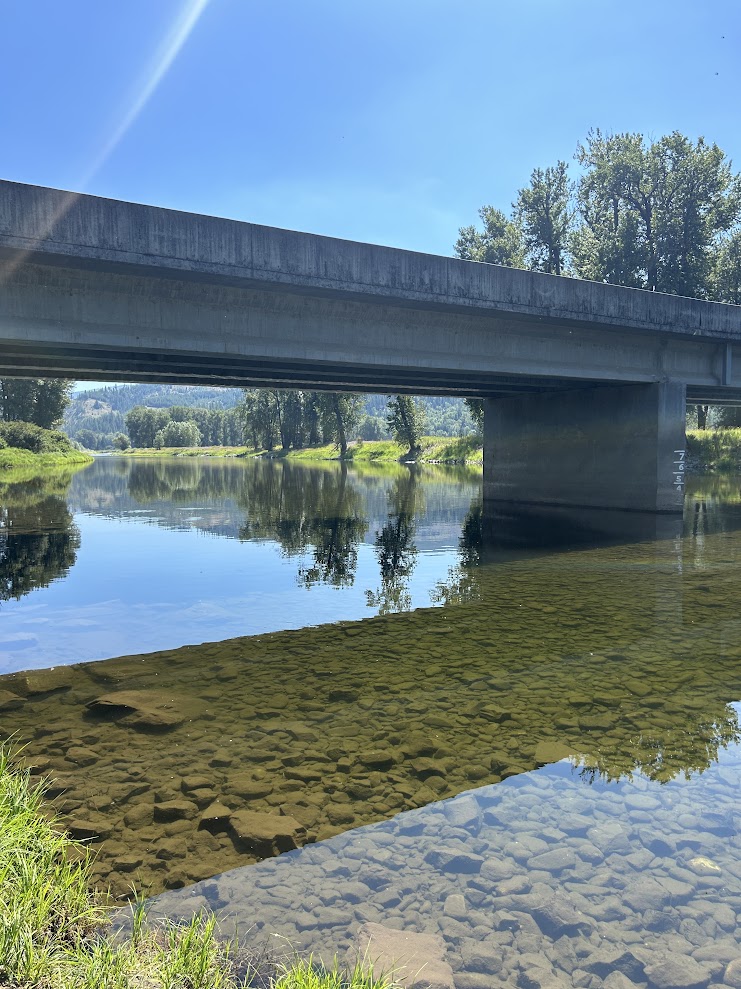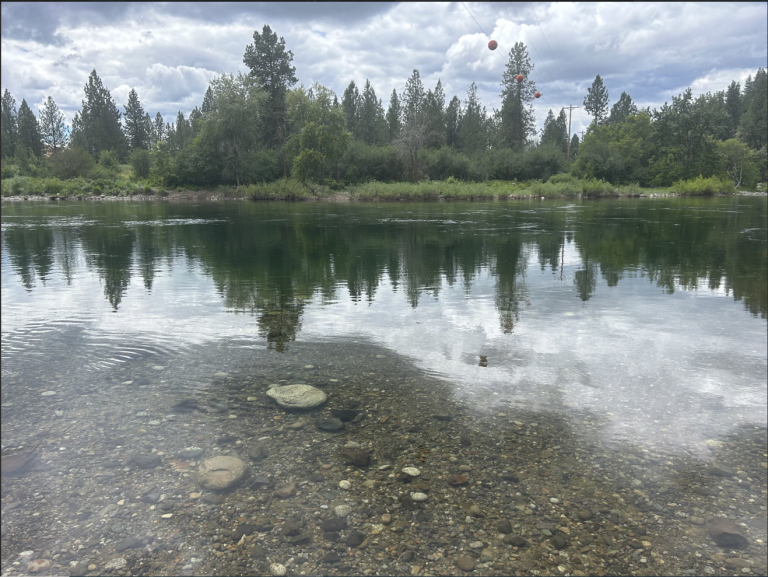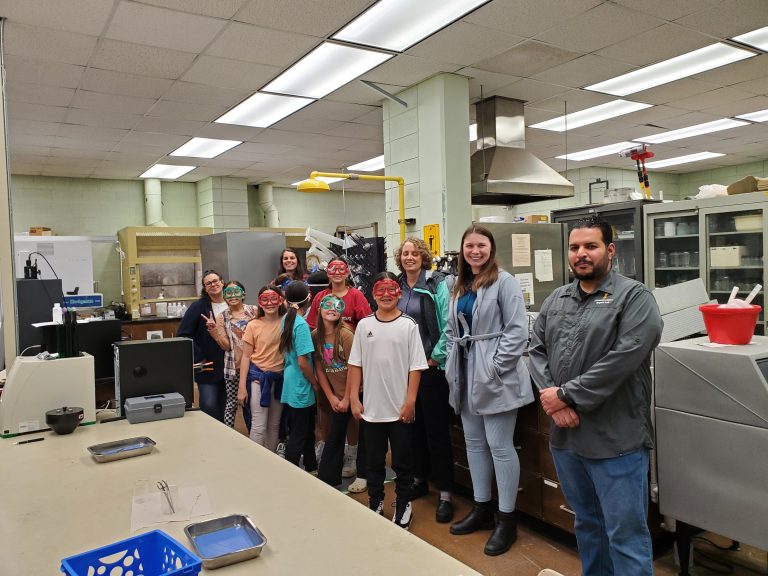Researchers attend 2023 American Geophysical Union (AGU) conference
The American Geophysical Union (AGU) is an organization dedicated to highlighting international innovations and scientific research in the fields of Earth and Space Science. Their annual meeting each December brings together over 20,000 researchers from all over the world to present and discuss the latest scientific developments. Researchers Elizabeth Herrmann, Sultan Aljohani, and Dr. Mary Engels, attended the 2023 meeting in San Francisco and presented some preliminary work on detecting and monitoring 6PPD and 6PPD-Quinone (6PPD-Q) in the environment.
MS student, Elizabeth Herrmann, presents tire wear particle hazard index development at the American Geophysical Union meeting in Dec of 2023.
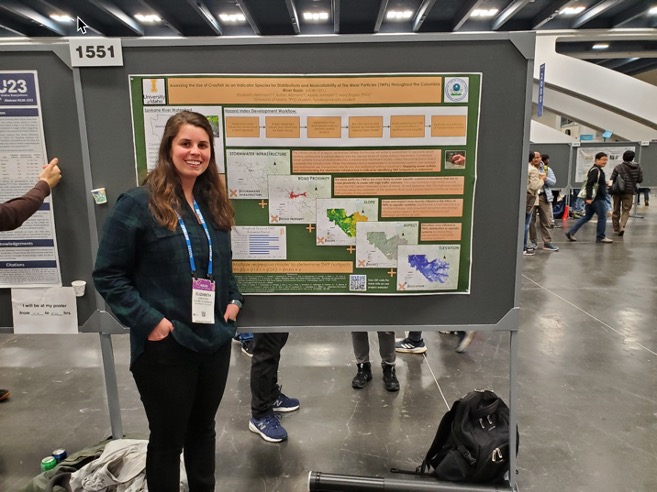
Elizabeth’s poster presentation focused on her work developing a digital hazard index in ArcGIS to predict hotspots for tire wear particle (TWP) pollution. Her initial analysis focused on road proximity, traffic volumes, stormwater outfall locations, soil types, and regional topography in the region around the Spokane River, which consists of Spokane, Washington, and the areas around Coeur d’Alene, Idaho.
Though this was her first time at AGU, Elizabeth said that she was able to take so many different ideas from the researchers who were at the conference. “[Presenting] has instilled more confidence for me because I was able to talk through the plan with several researchers conducting similar work and get confirmation that all of my approaches were sound.”
Elizabeth enjoyed the opportunity to participate in the meeting, expand her science communication skills, and to interact with people who share her passion for environmental science. At first, she felt overwhelmed because of the number of researchers there; but that gave way to a feeling of excitement when she realized that all the attendees were people, who like her, were passionate about research, conservation, and wanting to work together to solve environmental problems. After being there for a while, she found it amusing that she could easily pick out who was headed to the conference because most of the attendees were around her age and wearing similar outfits.
Currently, Elizabeth is refining the hazard index that she presented at AGU. She wants to make sure that the transformation of her scale is weighted correctly so that when she runs the final analysis, each layer is weighted and applied accurately. Once she refines the index, she will use a preliminary version to help guide the determination of sampling locations for this summer’s field sampling campaign.
PhD student Sultan Aljohani presents his overview of the proposed method to detect 6PPD-q in aquatic systems using crayfish as an indicator species.
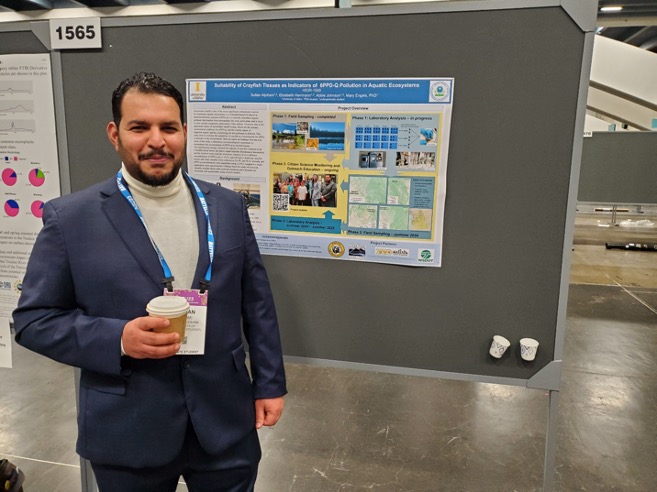
Though it was Elizabeth’s first time at a big scientific meeting, Sultan previously attended a water-focused scientific conference in his home country, Saudi Arabia, as an observer. At this meeting, Sultan presented his research on developing a methodology for determining the suitability of crayfish as indicators of 6PPD and 6PPD-Q pollution in aquatic ecosystems.
Sultan said that though presenting at AGU in English, his second language, was difficult, he recommends the experience to anyone interested in environmental research at least once in their career. AGU, he said, is a great place “to see people, to see how they act, and how they present” and though challenging, it is a good place to practice extemporaneous speaking. In December, he presented an overview of Phase 1 of a 3-phase project. Phase 1 is a laboratory exposure experiment where two species of crayfish were exposed to different concentrations of 6PPD-Q. The crayfish were harvested at various time intervals to determine how long crayfish need to be exposed before the pollutants become detectable in their tissues. This work, in combination with Elizabeth’s hazard index work, will directly inform Phase 2, a summer field sampling campaign, and Phase 3, a citizen science outreach effort, which will take place during the summer of 2024. A copy of Sultan’s poster from AGU can be seen here.
